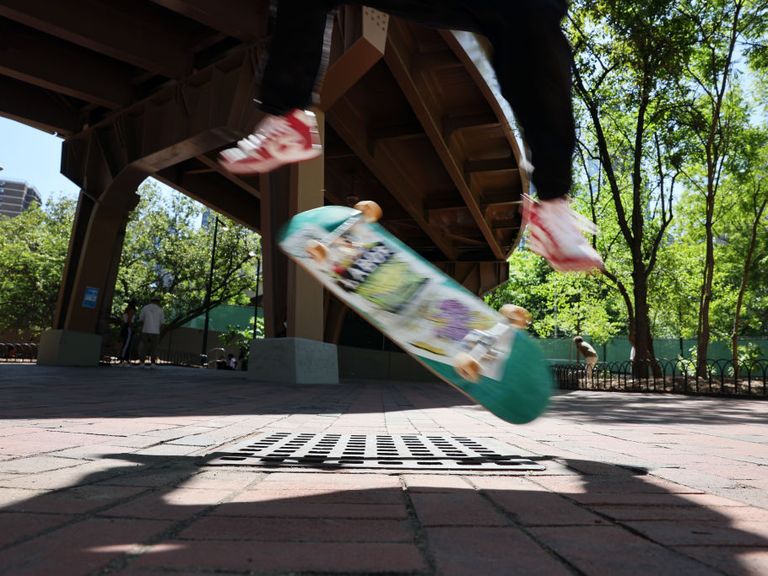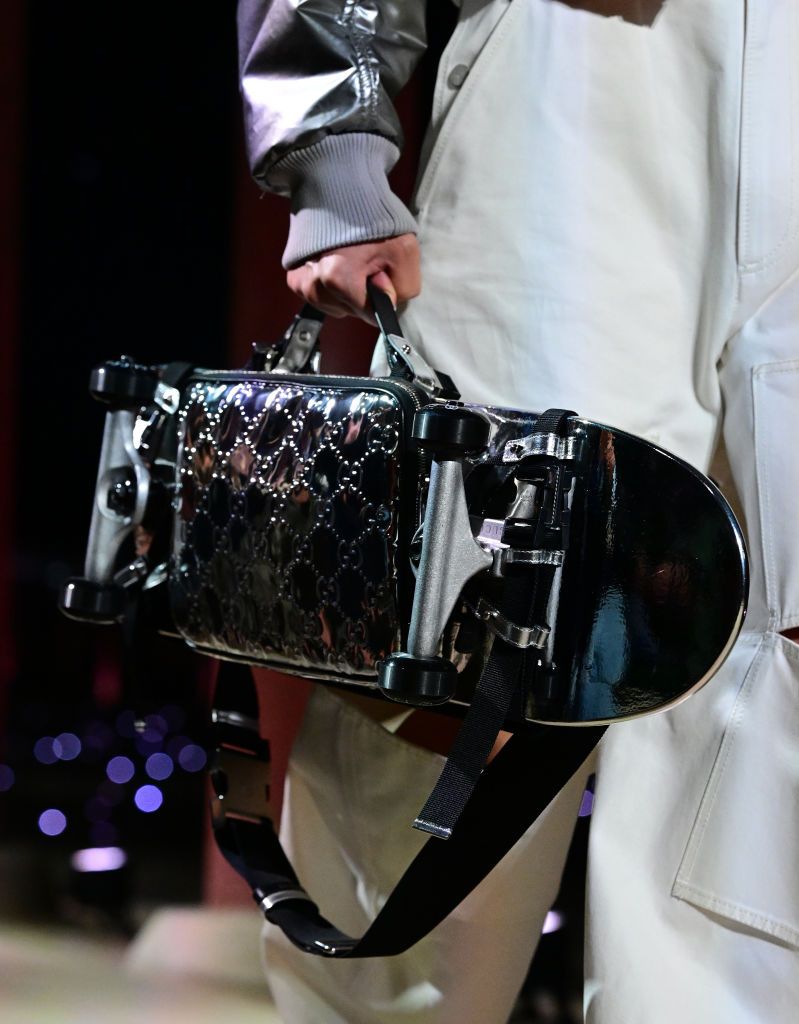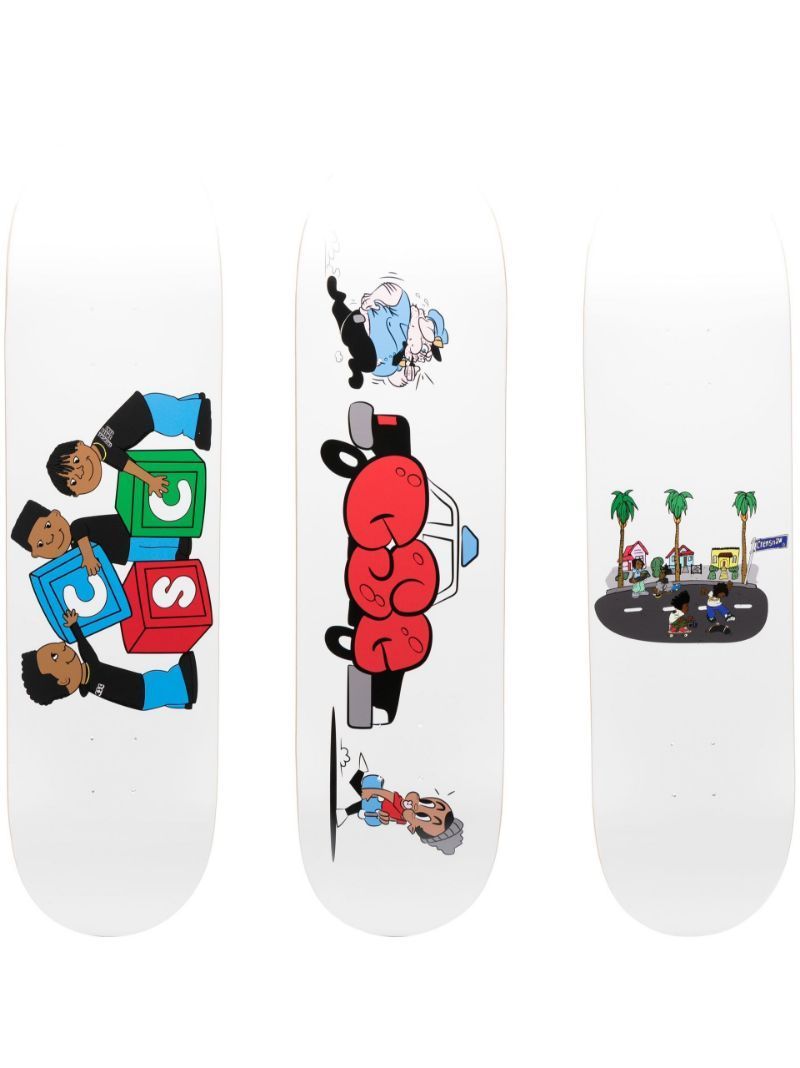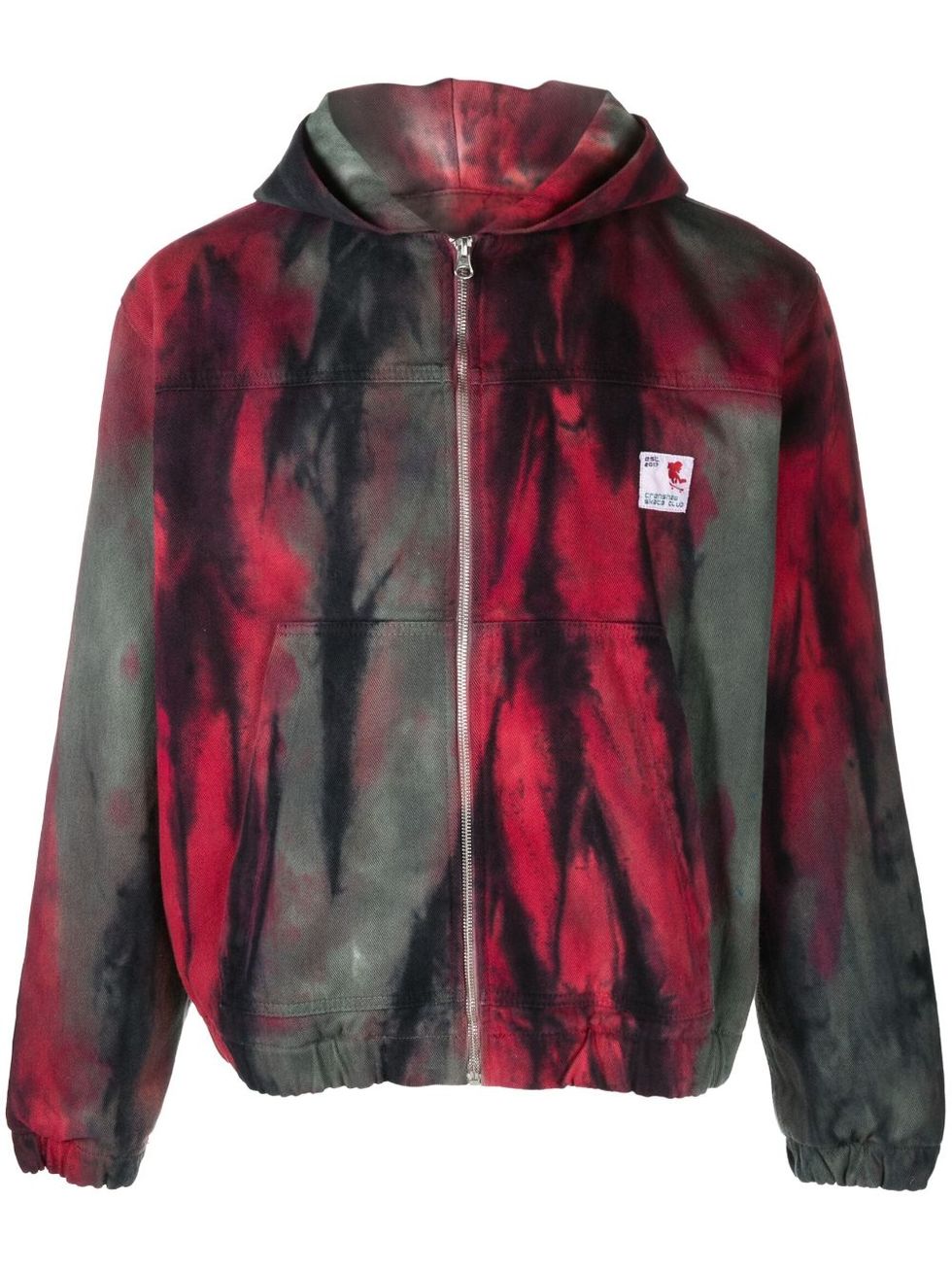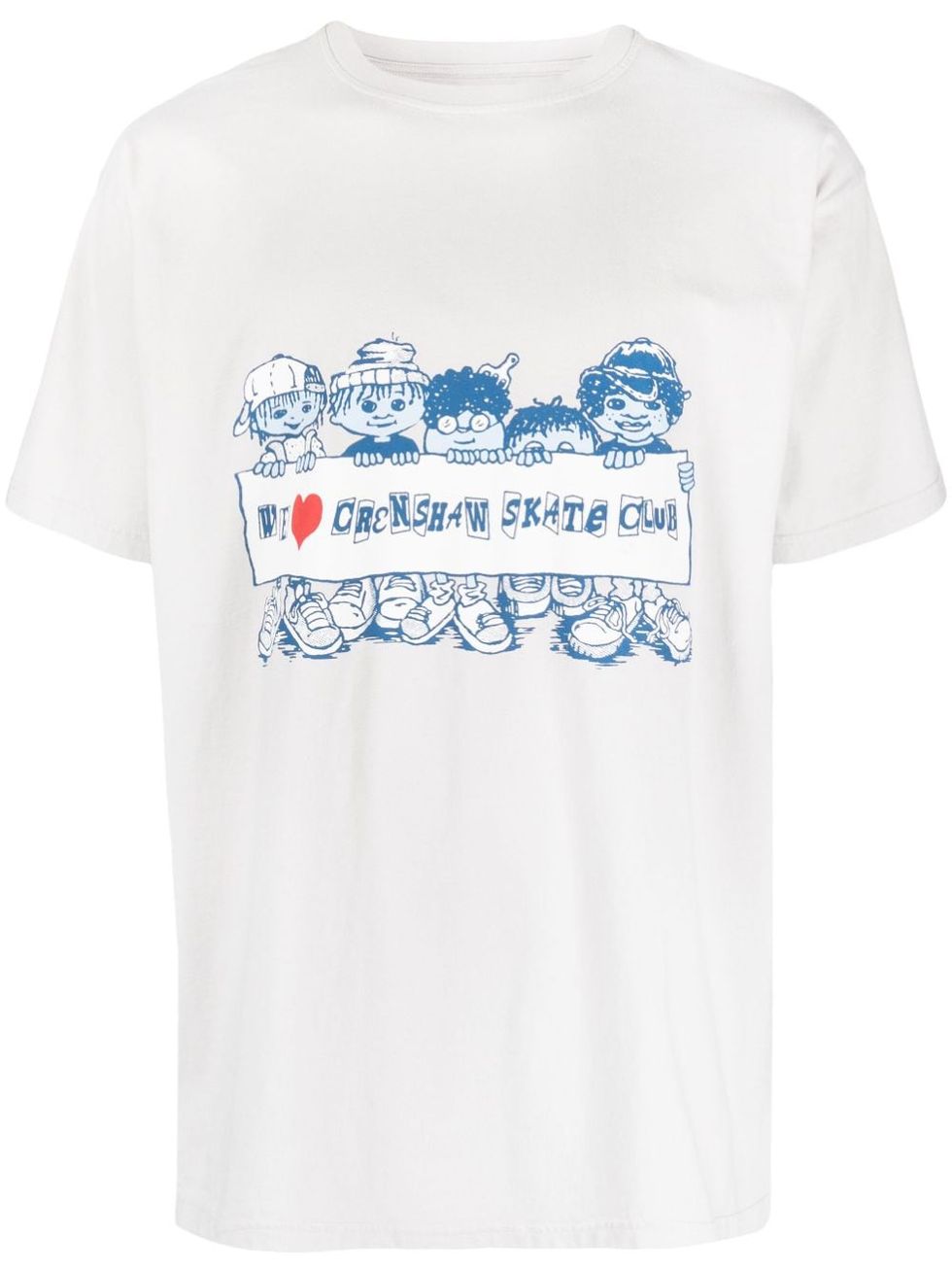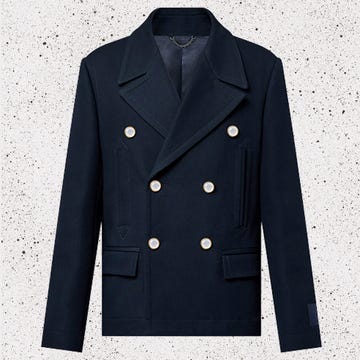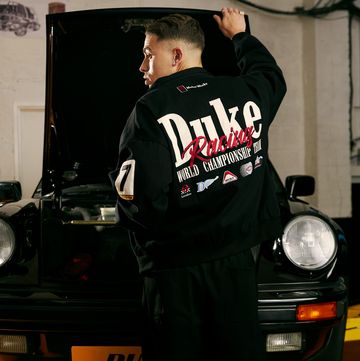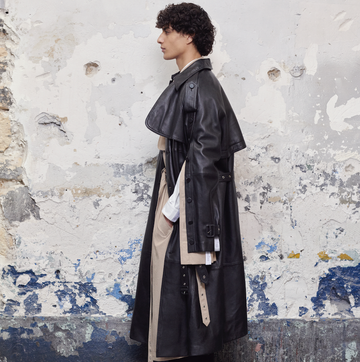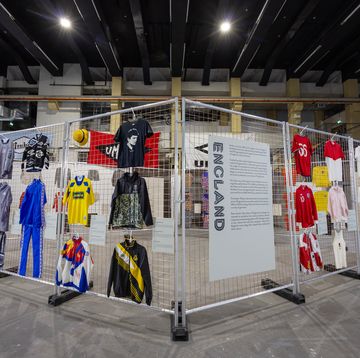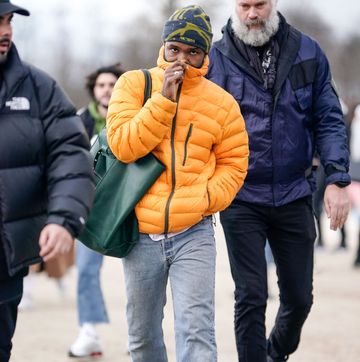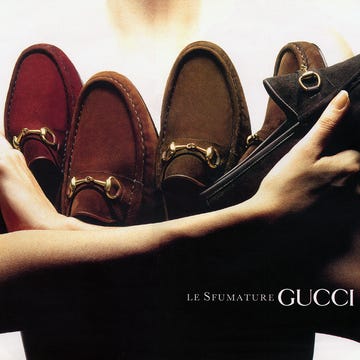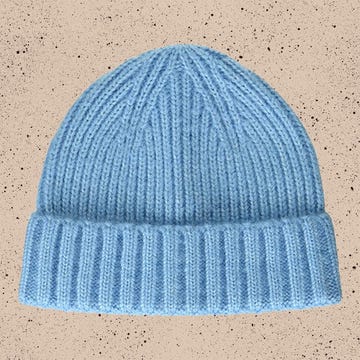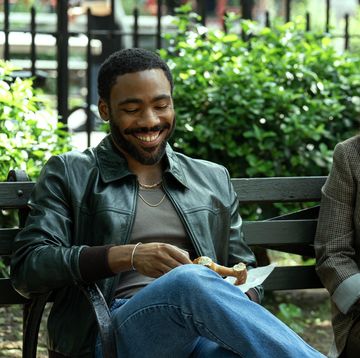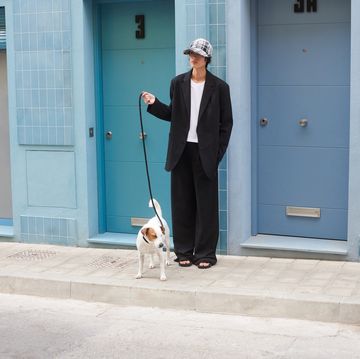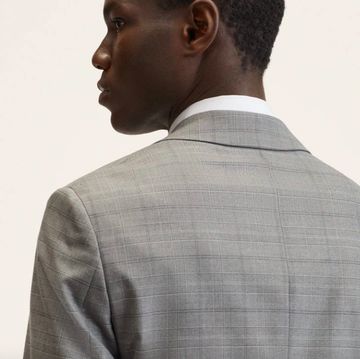You're always guaranteed two things during the resort shows: that the handful of fashion houses who do them will whisk attendees to far-flung, zeitgeisty destinations, and that the shows – often no longer than a routine dentist check-up – are as much a social media spectacle as they are a presentation of new clothes. So it was hardly surprising that Gucci's Cruise 2024 collection in May was debuted at the six-century-old Gyeongbokgung Palace in Seoul, South Korea, or that it became a hot topic in digital discourse across the days that followed.
Inspired by “the global community at the heart of Gucci itself”, the collection referenced subcultures ranging from wavy surfer dudes to Berghain ravers. Still, there was one surprise accessory that grabbed the most likes and reposts (as well as offline attention): a skateboard bag.
You may have noticed that this is not the first example of an actual skateboard being seen on the runway recently. Before the Gucci accessory made headlines, JW Anderson presented broken boards woven into knitwear for spring/summer ’23; Louis Vuitton sent a model out with a skateboard for autumn/winter ’22, while Hermès released the Bolide Skate 65 – a leather tote that’s been neatly fitted with a skateboard at its base – last year. Deep dive into trend reports of bygone seasons and you'll likely see ‘skater boy’ making an appearance – cue: baggy, low-rise jeans (Off-White A/W19) and ill-fitting graphic-tees (Celine S/S21), much like the skating frontmen in Larry Clark’s Kids. It's Nineties, somewhat hip-hop influenced... but, in Britain at least, is it an outdated perception of skater style?
“I think for me, skateboarding is an attitude and it's an energy and I think there's a style that goes with it," says Aries Arise co-founder, Sofia Prantera, though she believes that luxury fashion brands are often off the mark, leaning too heavily into stereotype. While she points out that her label doesn’t design “real skatewear”, the streetwear brand consistently (and proudly) works in the perimeters of the London skater scene. That's not to mention that she started her career at Slam City Skates in Brick Lane, previously created the much-loved skate brand Silas, and then married a skater who has instilled a passion in the sport into their kids. Her Aries Arise and Silas co-founder, Fergus Purcell, even designed Palace's iconic tri-ferg logo. It's been a journey.
“I do think it has changed,” she explains, of the wardrobes you'll see gliding around London's skate parks. “It's much more genderless at the moment, as skating is always at the forefront of subculture.”
Skater style has evolved since the sport's inception in the mid-century, but it first started to carve out a unique sartorial identity in the Seventies, defined by loose-fitting t-shirts and baggy jeans. Soon enough, the influence of the Z-Boys, a group of California surfers who took the sport from the slalom to sidewalks and disused swimming pools in the mid-seventies, extended to skaters' wardrobes, too: plaid shirts, no shirts, good hair and bad attitudes reigned supreme. The Eighties shifted even further towards the counterculture, with styles ripped from punk and early hip-hop. But it's the even more outsized Nineties look – synonymous with cult skate magazines and streetwear culture, popularised in the newly televised X-Games and the video game behemoth Tony Hawk's Pro Skater, as the extreme sport rapidly grew into mass media proposition – that has lingered within many contemporary fashion designers' memories.
An afternoon spent observing the skaters at the iconic Undercroft on London's Southbank earlier this summer confirmed Sofia's contrarian take. While bottoms were still baggy – a silhouette that will always be around for practical manoeuvrability purposes – skaters wore slim-fitting knitted polos and tank tops tucked neatly into their trousers, and one guy had glittery beads hanging on the end of his braids. Vans and Supreme logos were spotted, but there were more football shirts worn than famous skate or streetwear brands. To be frank, you wouldn't be able to pin any of the outfits to what fashion currently defines as the ‘sk8er' aesthetic.
Meanwhile, there are designers in the scene doing things a little differently. Tobias McIntosh is an IRL skateboarder and founder of up-and-coming fashion brand, Crenshaw Skate Club. It launched on Farfetch this summer, six years after he started the label at the tender age of 14, and McIntosh wants to use his brand to act as a reflection of the different communities that exist within the skating sphere, particularly that of the predominantly Black inner-city district in South Los Angeles the label is named after.
“I think that type of representation has become more and more apparent in the skate industry since starting Crenshaw Skate Club, but there is still a long way to go,” he explains. “And CSC will continue to advocate and fight for inner-city skateboarding representation.”
McIntosh’s offering sits neatly beside the juggernauts that dominate the skatewear scene – think Stüssy and Born X Raised, to name just two – presenting logo-laden iterations of hoodies, tees and shorts. There's a clear intention: if you’re able to identify what your favourite skater is wearing, you’re more inclined to wear that too.
“I would say that skater’s style over the decades has changed based on who the most popular skaters are at the time,” says McIntosh. “For example, when I started skating my favourite skaters were (and still are) Na-kel Smith, Ishod Wair, and Tyshawn Jones. And when watching their footage I would see what all of them wore when they skated. So, I took pieces of all their individual styles to craft my own unique style. I remember in early footage of Tyshawn he always wore hats when he skated so I began to wear hats”. Needless to say, now that the sport is embedded in the mainstream, lucrative brand deals mean that professional skaters are rarely in full control of what they wear on the board.
Streetwear brands like Supreme and Palace, still beloved by the skating community, now regularly collaborate with fabled fashion houses – the former with Louis Vuitton in 2017, the latter with Gucci last year – earning them clout in markets more accustomed to runways than skateparks. So, are we destined to see haute streetwear billowing around our nation's half-pipes any time soon? Probably not. But one thing's for certain: high fashion's fixation with skateboarding will roll on for some time yet.
